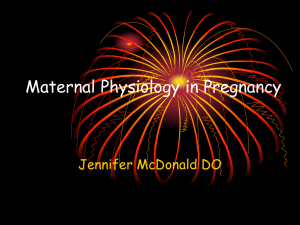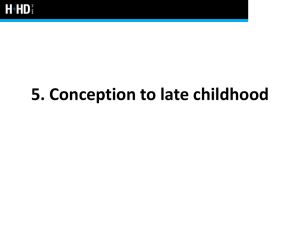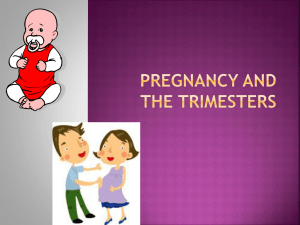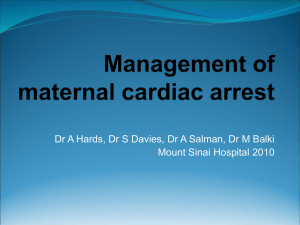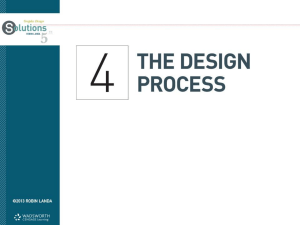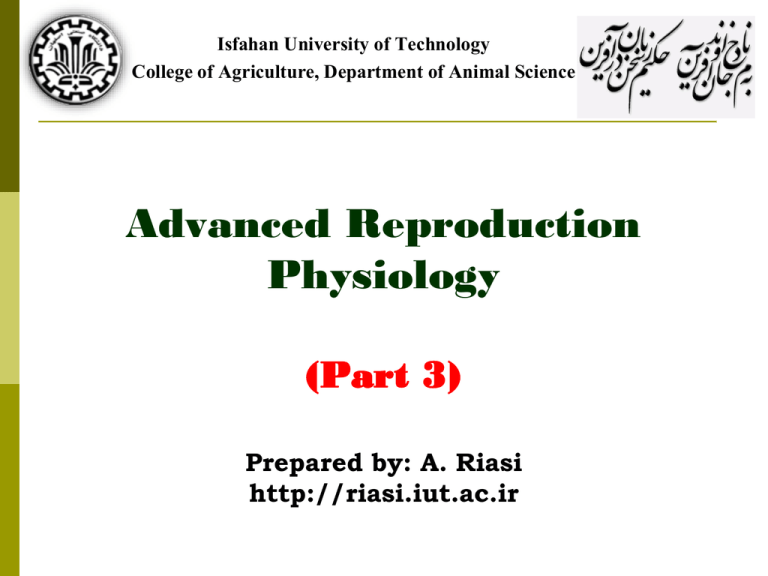
Isfahan University of Technology
College of Agriculture, Department of Animal Science
Advanced Reproduction
Physiology
(Part 3)
Prepared by: A. Riasi
http://riasi.iut.ac.ir
Physiology of Pregnancy and
Embryo Development
Spermatozoa in female tract
In
natural mating semen are introduced in:
Vagina
Cervix
Within
the female tract spermatozoa are lost by:
Phagocytosis by neutrophils
Physical barrier including the cervix
Spermatozoa in female tract
Two
stages for spermatozoa transport:
Rapid transport
Oxytocin
secretion
Prostaglandins
Sustained transport
Spermatozoa in female tract
Factors
may affect spermatozoa transport in
cervix:
Sperm motility
Physicochemical change in cervix secretions
Spermatozoa in female tract
Spermatozoa in female tract
Sperm
capacitation:
Chemical changes
Remove
decapacitation factors
Remove
cholesterol
Membrane
ions changes
Physical and morphological changes
Spermatozoa in female tract
Higher
levels of FPP prevent capacitation
FPP is found in the seminal fluid and comes into
contact with the spermatozoa upon ejaculation.
It has a synergistic stimulatory effect with
adenosine that increases adenylyl cyclase activity
in the sperm.
Spermatozoa in female tract
Other
chemical changes:
Removal of cholestrol and non-covalently bound
epididymal/seminal glycoproteins is important.
The result is an increased permeability of sperm to
Ca2+, HCO3− and K+
An influx of Ca2+ produces increased intracellular
cAMP levels.
Spermatozoa in female tract
Altering
the lipid composition of sperm plasma
membranes affects:
The
ability of sperm to capacitate
Acrosomal
Respond
reaction
to cryopreservation.
Spermatozoa in female tract
High
intracellular concentrations of Ca2+,
HCO3− and K+ are required for:
Acrosome
Fuse
reaction
with the oocyte.
Spermatozoa in female tract
Physical
and morphological changes:
The oocyte moving in female tract
Oocyte
Smooth
is transported by cilia of oviduct.
muscles of oviduct adjust the time of
oocyte transportation.
The
mature egg can only survive for about 6
hours, so the time of insemination is important.
Sperm penetration
A series
of events:
First step: acrosome reaction
After the reaction, the vesicles are sloughed, leaving
the inner acrosomal membrane and the equatorial
segment intact.
Sperm penetration
A
spermatozoon has to penetrate four layers
before it fertilizes the oocyte:
Sperm penetration
Sperm penetration
Sperm penetration
Sperm penetration
Sperm penetration
Three
changes occur in the oocyte after
penetration of vitelline membrane:
Fertilization
Fertilization
has
two
important
genetic
consequences:
The diploid chromosome number is restored (2n).
The genetic sex of the zygote is determined
Fertilization
Cleavage
Cleavage
Cleavage
Increase conception rate
Embryonic
mortality in the initial seven days of
gestation:
Fertilization failure
Genetic defects
Impaired embryonic development
Increase conception rate
Measuring
and
embryonic mortality in weeks two
three
of
gestation
is
much
more
challenging.
This
period coincides with the maternal
recognition of pregnancy.
Increase conception rate
Successful
establishment of pregnancy depends
on a delicate balance between:
Luteolytic mechanisms inherent to the endometrium
at the end of diestrus.
Antiluteolytic mechanisms, orchestrated by the
conceptus.
Increase conception rate
Some
strategies for increasing conception rate:
Using TAI protocols
Stimulate growth and/or differentiation of the preovulatory follicle
Stimulate CL growth rate
Increase plasma progesterone concentrations in the
initial three weeks after insemination.
Increase conception rate
Decrease the effects of a dominant follicle during
the critical period
Antiluteolytic stimulus provided by the conceptus
Decrease uterine luteolytic capacity
Increase conception rate
Reproductive
physiologists had long searched to
develop a synchronization program.
Ovsynch
synchronizes AI at a fixed-time
without the need for estrus detection.
Increase conception rate
Some
factors may affect Ovsynch results:
The stage of the estrous cycle
Cyclic status at the time that GnRH is administered
(Bisinotto et al., 2010)
Increase conception rate
Researchers
have modifed the original Ovsynch
protocol to try to:
Improve
synchrony
and
fertility
through
presynchronization
Altering the timing of AI in relation to ovulation
Testing the various injection intervals of the original
protocol
Increase conception rate
TAI
programs need day-to-day operation, so it
may use for:
Lactating dairy cows with little or no estrus
detection at all
Voluntary Waiting Period (VWP)
Increase conception rate
Factors
explaining the variation in conception
rate to TAI among herds may include:
The proportion of anovular cows
The follicular dynamics of individual cows
The ability of farm personnel to implement Ovsynch
Increase conception rate
Following
this first report, numerous protocols
have been proposed and routinely applied in
high production dairy cows (Wiltbank et al., 2011).
Increase conception rate
Programming
cows for first postpartum AI using
presynch/ovsynch
Use of presynch for programming lactating dairy
cows to receive their first postpartum TAI can
improve first service conception rate in a dairy herd.
Increase conception rate
One possible hormone injection and TAI schedule for the Presynch/Ovsynch
protocol based on the results of Moreira et al., 2000
Increase conception rate
In
an assay, cycling cows conception rate was
29% for Ovsynch and 43% for Presynch.
These protocols may presents low efficiency when
applied in tropical condition.
Increase conception rate
Estradiol
plus progesterone based protocol
Exogenous P4 and progestins has consequences:
Suppresses
LH release
Alters ovarian function
Suppresses estrus
Prevents ovulation
Increase conception rate
Novel
studies introduced the use of E2 plus P4
to control follicular wave dynamics (Sá Filho et al., 2011)
Several studies found that E2 plus P4 treatment
suppress the growing phase of the dominant follicle.
The interval from E2 treatment to follicular wave
emergence seemed to depend on FSH resurgence
(O'Rourke et al., 2000).
Increase conception rate
In
E2 plus P4 protocols, a lower dose of E2 is
normally given from 0 to 24 h after progestin
removal to induce a synchronous LH surge (Hanlon
et al., 1997; Lammoglia et al., 1998; Martínez et al., 2005; Sales et al., 2012).
Increase conception rate
Anestrous
cows have insufficient pulsatile
release of LH to support the final stages of
ovarian follicular development and ovulation.
What
we should do for anestrous cows?
The treatment with equine chorionic gonadotropin
(eCG) may be effective.
Increase conception rate
eCG
administration for anestrous or low BCS
dairy cows has benefit effects
Ispierto et al., 2011).
(Souza et al., 2009; Garcia-
Increase conception rate
Antiluteolytic
strategies:
Pharmacological
Mechanical
Nutritional
Management
Increase conception rate
Strategies
to increase progesterone:
Daily injection of progesterone
Using of progesterone releasing intravaginal device
(PRID)
Inducing the formation of accessory corpora lutea by
the ovulation of the first wave dominant follicle.
Increase conception rate
Effect
of estrogen
Inskeep (2004) indicated that estrogen secretion
from a large follicle from days 14 to 17 of
pregnancy may negatively affect embryo survival.
This hormone has a central role in PGF production
and luteolysis.
Increase conception rate
Some
strategies for reducing estrogent:
Absence of dominant follicles
Reduction of their steroidogenic capacity
Reduction of endometrial responsiveness to estradiol
during the period of maternal recognition of
pregnancy
Pharmacological approaches
Increase conception rate
Pharmacological
strategies
The GnRH-hCG treatment
It
induced
concentrations
an
increase
in
plasma
progesterone
Increase conception rate
Antiluteolytic
strategies:
Antiinflamatory drugs
Fat feeding
Bovine somatotropin (bST)
Increase conception rate
Synthesis
of PGF results from a coordinated
cascade of intracellular events.
A
rate limiting step in this cascade is the
conversion of arachidonic acid to prostaglandinH2 (PGH).
Increase conception rate
The
key enzyme is PTGS2 or COX-2.
The
PGH is subsequently converted to PGF.
Guzeloglu et al. (2007) treated Holstein heifers with
flunixin meglumine, a non-steroidal antiinflamatory
drug which inhibits PTGS2 activity, on days 15 and
16 after insemination.
Increase conception rate
Fat
feeding influences several aspects of
reproduction in cattle
(See review by Santos et al., 2008).
Increase conception rate
Feeding
long chain fatty acids can modulate
PGF production in the endometrium.
Effect of n-3 fatty acids (Mattos et al., 2003, 2004)
Effect of N-6 fatty acids (Pettit and Twagiramungu, 2004)
A summary of the effects of fatty acid feeding on
cattle fertility reported by Santos et al. (2008).
Increase conception rate
Strategies
for growth of the conceptus
Secretion of IFN is positively associated with
conceptus size.
Administration of bST.
Maternal recognition of pregnancy
Mother
quickly becomes cognizant of the
cleavage-stage embryo within her body.
Mother
reacts to embryo presence, but its not
enough for the pregnancy to proceed.
Maternal recognition of pregnancy
For
maternal recognition it is necessary:
The normal cyclic regression of CL be prevented in
order to maintain progesterone production.
The conceptus has also to ensure that an adequate
supply of maternal blood reaches the sites of
placentation.
Maternal recognition of pregnancy
The
conceptus is recognized as foreign by the
mother and it must nevertheless take steps to
avoid a losing confrontation with the maternal
immune system.
The
conceptus does not become vascularized by
the host's blood supply.
Maternal recognition of pregnancy
The
ways in which different species:
In human
Luteolysis
is initiated by an intraovarian mechanism,
although many believe it requires local production of
PGF2α.
Maternal recognition of pregnancy
Luteolysis
in these species is avoided by the intervention
of chorionic gonadotrophin (CG):
The CG probably binds to LH receptors
The CG can stimulates progesterone production
The CG exerts a protective action against PGF2α
Maternal recognition of pregnancy
In rodents
Rodent
During
do not produce a CG at all.
pseudopregnancy in the rat, the cycle is
lengthened to 12 days before the CL regress.
This
extension of CL life span is the result of surges of
pituitary prolactin release.
If
the rat is pregnant, a series of placental lactogens and
prolactin-like hormones produced by the placenta.
Maternal recognition of pregnancy
In pigs
Estrogen
released by the trophoblast as it begins to
elongate is probably the initial signal to the mother that
she is pregnant.
Maternal recognition of pregnancy
In horses
The
equine conceptus forms an encapsulated spherical
structure between days 12 and 14.
The
constant patrolling may be the key to the mechanism
that inhibits PGF2α release.
Maternal recognition of pregnancy
In cattle and sheep
The
conceptus begins to intervene in the luteolytic
process three to four days before the CL actually become
dysfunctional.
In
these species, the antiluteolytic substance, an unusual
Type I interferon (IFN)-t, has been reviewed on numerous
occasions in the literature.
Its
presence in the lumen clearly suppresses the normal
pattern of pulsatile release of PGF2α.
Maternal recognition of pregnancy
Importance
of progesterone:
The concentrations of progesterone at a critical time
before
implantation
is
important
for
cows
pregnancy.
Two logical possibilities for lower progesterone in
the lactating dairy cows:
Secretion
by the corpus luteum is reduced
Metabolism
of progesterone is increase
Maternal recognition of pregnancy
Importance
of progesterone:
Some factors may affect the metabolism and
excretion of progesterone:
Feed
intake
Milk
yield
Administration
of exogenous progesterone
Embryonic loss
Much
prenatal mortality occurs in all mammals.
Higher
amount of embryonic wastage occurs
following IVF and ET.
The majority of these losses occur prior to or during
implantation.
Embryonic loss
Embryonic
losses in sheep and cattle:
It most occurring in the first 3 wk of pregnancy.
Natural asynchronies:
The
late onset of the first meiotic division may lead to
some oocytes being delayed in their maturation.
A
second natural cause of asynchrony may be due to
delayed fertilization.
Finally,
embryos are known to cleave at different rates.
Embryonic loss
Injection interferons have ability to improve
pregnancy success in ewes may be due:
The
rescue of embryos delayed.
Embryonic loss
Pig
conceptuses attain control over maternal
progesterone production:
Releasing estrogen and probably other factors just
prior to the time the CL would normally regress.
The second consequence is that it induces the
massive release of uterine secretions from the
uterine glandular and surface epithelium
Pregnancy-Associated Glycoproteins (PAG)
In
1982
the
partial
purification
and
characterization of a pregnancy-specific protein
(PSP-B) was reported from cattle.
More
recently, isolated several isoforms of PAG
from bovine placental tissue.
Pregnancy-Associated Glycoproteins (PAG)
It
is now clear that PSP-B and PAG-1 are
identical in sequence.
The
presence of PAG-1 (or PSP-B) in blood
serum has provided the basis of a potentially
useful pregnancy test in cattle.
Pregnancy-Associated Glycoproteins (PAG)
The
antigen generally becomes detectable by
about day 20 postbreeding.
In
cattle, concentrations of the antigen rise
gradually during gestation and peak just prior to
parturition.
Pregnancy-Associated Glycoproteins (PAG)
The
PAG have a well-defined peptide- binding
cleft.
They are relatively hydrophobic polypeptides.
They are unlikely to have enzymatic activity.
Pregnancy-Associated Glycoproteins (PAG)
Two
possible functions for PAG are suggested:
They could be hormones, which, by virtue of their
binding clefts, are able to bind specific cell surface
receptors on maternal target cells.
The second suggestion is that PAG sequestered or
transported peptides
Some research papers associated to this lecture
1-Pancarci, et al. 2002. Use of estradiol cypionate in a presynchronized
timed artificial insemination program for lactating dairy cattle. J. Dairy Sci.
85:122–131.
2- Franco, et al. 2006. Effectiveness of administration of gonadotropinreleasing hormone at Days 11, 14 or 15 after anticipated ovulation for
increasing fertility of lactating dairy cows and non-lactating heifers.
Theriogenology 66: 945–954.
3- De Rensis, et al. 2008. Inducing ovulation with hCG improves the fertility
of dairy cows during the warm season. Theriogenology 69: 1077–1082
4- Bartolome, et al. 2005. Strategic use of gonadotrophin-releasing hormone
(GnRH) to increase pregnancy rate and reduce pregnancy loss in lactating
dairy cows subjected to synchronization of ovulation and timed
insemination. Theriogenology 63: 1026–1037.

